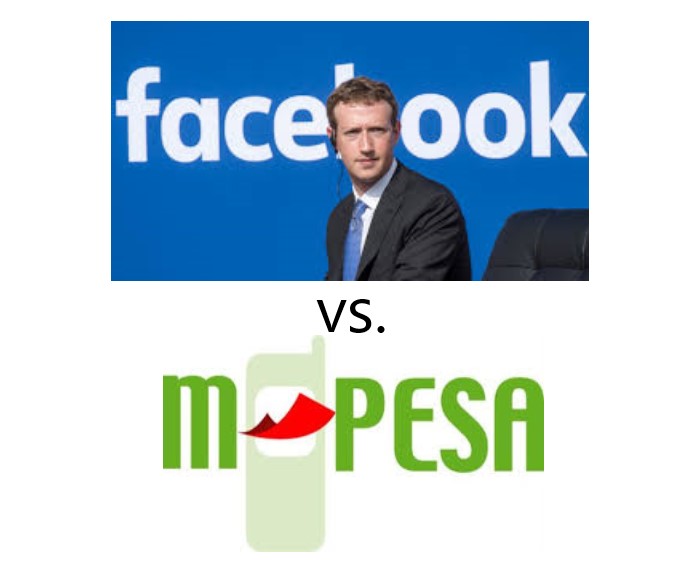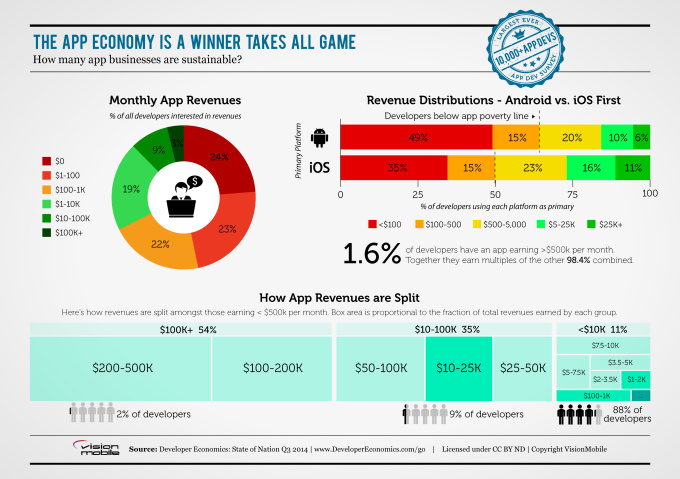Mayo0615 Reblog from July 22, 2013
It dawned on me that my blog post from July 2013, still has particular relevance to the current situation in Canada. I discuss the longer term structural issues confronting Canadian entrepreneurs and Canadian venture capital. Boris Wertz, founder of Vancouver’s Version One Ventures is also crucial to this discussion. When I first arrived in Canada, I learned quickly that the Vancouver startup ecosystem was nothing like what I knew from Silicon Valley. My personal case study was Mobile Data International, a pioneering company in wireless data, well before WiFi and Bluetooth, that could have led the market and the technology. Instead, the company was taken public much too early. MDI was bought by Motorola Canada for $39 Million, in a hostile takeover, and was essentially moved out of Canada and shut down. Later, in 2012, I had another opportunity to be up close and personal with Canadian innovation, as a participant in the Canada Foundation for Innovation deliberations in Ottawa. These two experiences have played a major role in the development of my views on this topic.
The following reblog raises the tough questions that are holding Canada back.
From July 2013:
In 2013, ContentDJ founder Jerry Tian published a blog post addressing the issue of “Why Canada Has No Big Tech Companies” – Nortel is dead and RIM is quite obviously dying, he points out. Tian, who was himself responding to an interview with Boris Wertz, founder of Vancouver’s Version One Ventures, offers a thought provoking theory and one that applies to a large degree to all up-and-coming startup ecosystems.
The founder questions the commitment and willingness of Canadian investors and entrepreneurs to devote the ten years or more that it may take to build an independent multi-billion dollar company with staying power, rather than flipping that company for an eight, nine, or even ten figure exit – typically to Silicon Valley acquirers – and exporting that future innovation and wealth building. It’s a charge that could be applied equally well to New York, Los Angeles, Chicago, Austin, Boulder, and dozens of would be international startup hubs.
“’Silicon Valley is not a place but a state of mind,” Tian writes, quoting KPCB General Partner John Doerr. “Some of these insights are collaboration, competition, openness to innovation, failures and experimentation. Probably the most important one is the long term commitment behind technology companies.”
Of course, Tian and Doerr are spot on. What emerging startup hubs often miss when trying to “become the next Silicon Valley” – a flawed mission in and of itself – is that the grandaddy startup ecosystem is more than its physical infrastructure of entrepreneurs, engineers, designers, investors, service providers, universities, and the like. Equally important are the systematic irrationality and a feedback loop around the willingness to turn down the quick buck and go for the massive once-in-a-generation success story.
This isn’t the case with every company, founder, or investor, but it exists in enough density in the San Francisco Bay Area, and based on results to a lesser extent in Seattle, that these are the only two areas areas in the country that have led to multiple ten billion dollar plus technology and internet companies – the true giants that transcend their local ecosystems and seep into the lives of average consumers.
It is these companies, with their ability to attract talent, make acquisitions, invest in long-term R&D, and create systemic wealth that make ecosystems. And with very rare exception, getting to this scale requires a decade or longer commitment and a willingness on the part of founders and investors to turn down near and mid-term paydays. Similarly, it requires a vision and an ambition to build something that will be around forever.
Tian writes:
So, why is nobody talking about these acquisitions? I think it’s simply because investors are getting filthy rich off these deals.
And that’s exactly what not to do if you want to create the next Silicon Valley. You cannot sell the hen that lays the golden eggs for a few quick buck [sic]. Technology companies take 10 years to really manifest the value. To really build a billion dollar company, it takes tremendous multi-decade commitment. And that’s the biggest missing piece in Canada.
Like or hate Zynga founder and former CEO Mark Pincus, one has to respect him for saying that he wants to build a “digital skyscraper,” a company that would be around for 100 years. Pincus went further to say that he views serial entrepreneurship as failure and that he wants to run Zynga for the rest of his career. Ironically, he recently replaced himself as CEO, personally recruiting Don Mattrick for the role. But Pincus made the ego-busting move in an effort to return Zynga to its former glory and to get it back on that century-long track.
In his somewhat controversial on-the-ground reporting on the Chicago ecosystem last summer, Trevor Gilbert delved into “the Midwest Mentality” and the impact it has on the types of companies that are built there. Gilbert called Chicagoans “pragmatic.” Lightbank partner Paul Lee offered an example of this pragmatism, saying that Chicago startups typically focus on generating revenue from day one, rather than building a massive, but unprofitable user base, a la Facebook and Twitter pre-monetization. Profit is all well and good, and should be the ultimate goal of any business that wants to be around for the long term, but focus on it too intently early on and it can be impossible to invest in growth. It takes a special kind of vision and fortitude to look past the short term and make the big bets required to create massive companies.
This is not to pick on Chicago. A similar phenomenon seems to exist in LA where companies race out to a low nine-figure valuation and then either stall out in that vicinity or sell for sub-one billion dollars to a larger out of town acquirer. Call it the curse of the big-little deal – maybe everyone here just wants to see their name in lights. In a market that is desperate for success stories and validation, these medium-sized exits are hailed as “wins” – and they are, given the difficulty of building a hundred-million dollar company – but they often rob the ecosystem of potential multi-generational tentpole companies. This is a mentality that appears to have changed in recent years, but that change has not yet bore fruit in the form of LA’s answer to Google, Amazon, or Facebook.
New York has seen its own version of this phenomenon, with the ecosystem’s biggest success stories, DoubleClick and Tumblr, being exits to Google and Yahoo respectively. Local darling MakerBot followed suit, selling for $600 million in June. New York does have Fab, Gilt, and Foursquare all shooting for the moon but these companies and the ecosystem as a whole still must prove that they can sustain this ambition and parlay it into a giant company.
As Tian points out, part of the blame for these exits falls on investors. It’s not that investors aren’t interested in massive outcomes – they most certainly are. But not all non-Silicon Valley investors are equipped for the financial and time commitment it takes to create them. These investors, many of which operate out of first- or second-generation funds, often have smaller pools of capital to invest out of.
Write a $2 million check at a $10 million valuation out of a $100 million fund, and a 50x return looks pretty good, returning 98 percent of your fund. Make that same investment out of a $1 billion fund and the impact on fund economics is decidedly less interesting. This is one of the few arguments in favor of mega-VC funds. But it also benefits firms that are on their fourth, fifth or sixth fund and have less to gain reputation-wise with solid base hits.
Returning to Tian’s piece, he closes by writing, “If you are wondering why Canada doesn’t have the [sic] billion dollar company, it cannot be more obvious than this. Too many people are in it trying to get rich quickly off entrepreneurs. Not enough people have the gut [sic] and commitment to create or help create something truly meaningful.”
Tian paints with a broad brush, yes, which ignores many of the subtle nuances and external factors that contribute toward building massive technology companies. But there’s little arguing that people in Silicon Valley think differently. Armed by decades of case studies and social proof, the ecosystem has developed a healthy disregard for rationality.
Mark Zuckerberg famously did just that when Yahoo came calling. He was just 20 years old and Facebook, at less than two years old, was unprofitable with just $30 million in revenue. Yet Zuckerberg and Facebook’s board, which included Peter Thiel and Jim Breyer, turned down Yahoo’s $1 billion offer. When the elder advisors tried to convince the young founder that his 25 percent of that offer would be a big number he said, “I don’t know what I could do with the money. I’d just start another social networking site. I kind of like the one I already have.”
Israeli social mapping company Waze just made the opposite decision, selling to Google for slightly more than that mythical $1 billion. Sarah Lacy cautioned Israel-bulls to “reconsider too much high-fiving over Waze.” While legendary local angel investor Yossi Vardi likes to compare Israeli startups to tomato seeds which need more experienced farmers to grow properly, Lacy believes that the country has the potential to build and sustain globally dominant Web companies without selling, offering MyHeritage as an example.
None of this is to say Silicon Valley is immune from this syndrome. There are thousands of entrepreneurs in the Bay Area who would rather flip their company than do the long, hard work of building something sustainable. But the sheer density of the ecosystem means that a dozen or so each year choose the road less traveled. Also, given the scale of the Valley ecosystem, building a big company is the only way to move the needle and attract talent and capital. Everyone in line at Philz coffee is working on the next “billion dollar business.”
Finally, Silicon Valley is a magnet for those entrepreneurs around the globe who want to build great technology companies, and the ecosystem surely benefits from this imported talent. This was actually Wertz’s central point in the original interview and is one that Tian touches on briefly. It’s a difficult problem to solve, given the power of knowing someone (or several someones) who has summited the mountain before and who can show you that it can be done. In each of these other markets, someone will have to be the first.
In many cases, it is highly irrational to turn down a nine- or ten-figure acquisition offer. There are real benefits to gaining access to the financial and personnel resources of a larger acquirer, ones that can often make or break the success of a still fledgling company. But, if there’s anything in Silicon Valley that Canada, LA, New York, and other startup ecosystems should aspire to it’s this willingness to roll the dice. Sometimes the shooter rolls a “7.”




















 Nicolas Spiegelberg earned a Masters in Computer Engineering from the University of Alabama in Huntsville in 2006.
Nicolas Spiegelberg earned a Masters in Computer Engineering from the University of Alabama in Huntsville in 2006.






